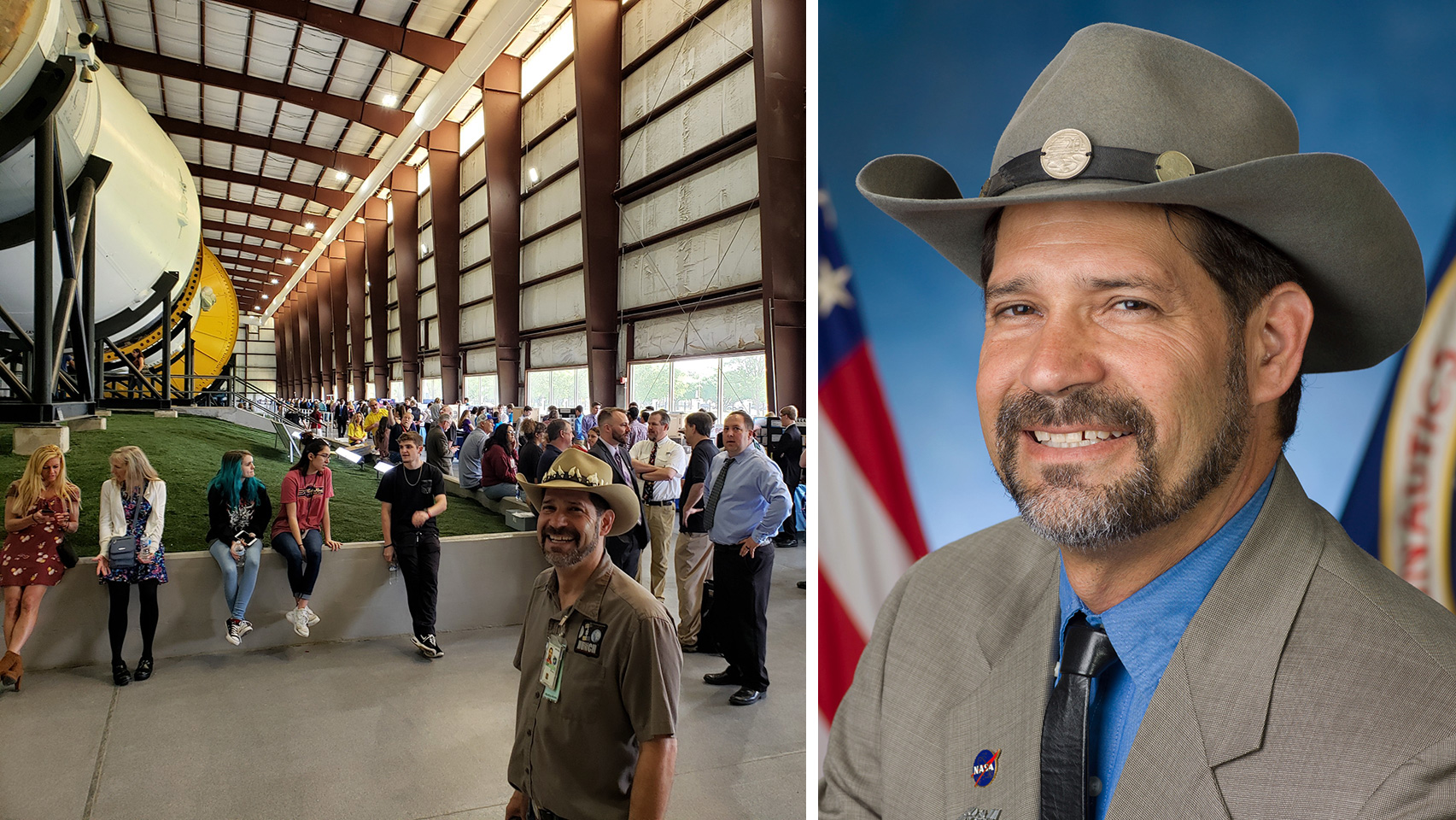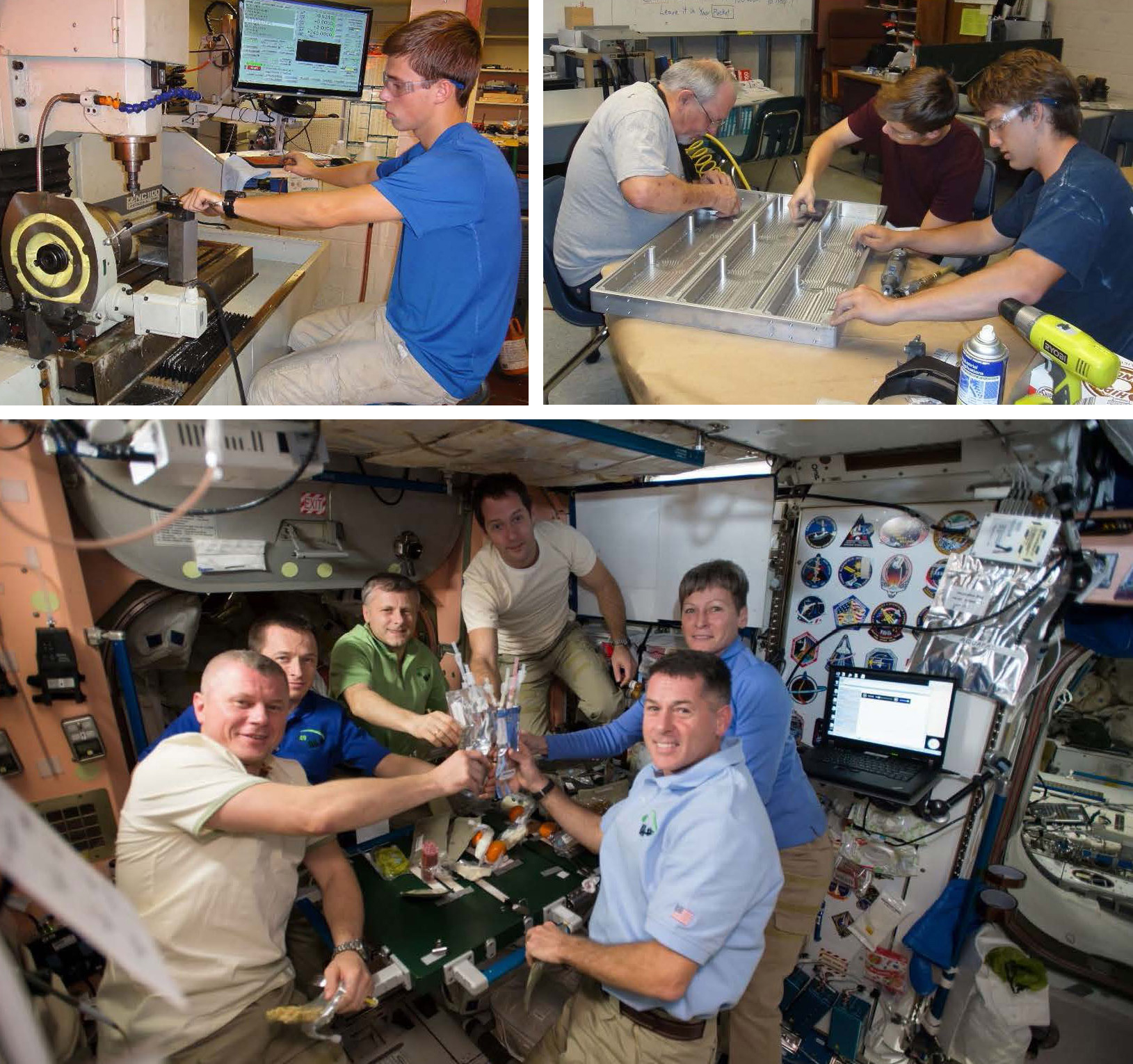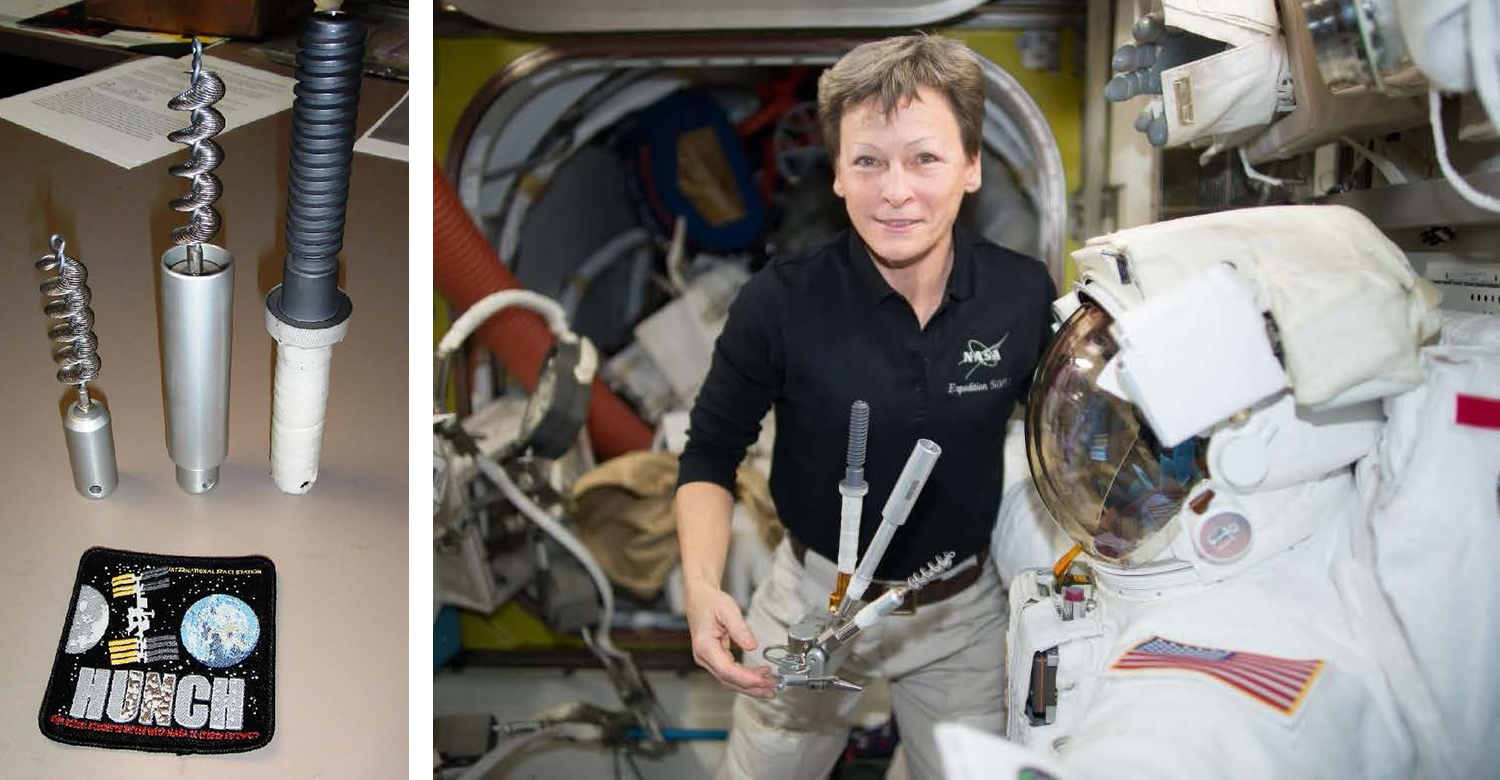Physics Alumnus Glenn Johnson Helps Improve Life in Space

“There’s no degree that prepares you to be a space toilet specialist but your degree shows that you know how to learn,” said alumnus Glenn Johnson (’91, physics).
“Potty training” is just one of many things he’s done for NASA astronauts. Things that we take for granted in our daily lives require training and practice when you’re living in zero gravity. He’s trained astronauts how to prepare food and eat, and how to avoid dangerous carbon dioxide bubbles while sleeping.
The taste of dried food can be boring so astronauts like to spice it up with tobasco or srirachi sauce. But a stray drop can easily float into their eyes so they need to learn how to prepare food without spilling it.
“A big part of CPP is hands-on learn-by-doing and at NASA there’s a lot of that,” Johnson said. He majored in physics because he liked the variety of things it allowed him to study.
After graduating, Johnson taught high school physics for five years. That experience prepared him for the work he’s now doing for NASA’s HUNCH program. HUNCH stands for High school students United with NASA to Create Hardware. Johnson is a design engineer who works with high school students in about 30 states to design and create new products that astronauts can use in space.
Johnson said, “We listen to the problems astronauts are having in orbit and design solutions to solve those problems.” Some of those solutions can be mission critical. For example, there are ACME bolts that hold batteries to the outside of the international space station (ISS) that kept jamming. Johnson and his students designed brushes to clean and lubricate the threads.
The galley table where astronauts on the ISS eat was built by students from three high schools in Texas. It features hand rails and places to hook bungee cords to hold things in place. It can also be reversed and used as a work table, complete with tracks to fasten down gear. Students did everything from designing to machining the parts.
Johnson reminisced about his time at Cal Poly Pomona. “I really liked the look of the campus with the jacaranda trees and the smell of jasmine. It’s a memory that sticks with me. The grounds keepers deserve a lot of credit.”
He remembers performing in physics magic shows that were open to the public. “I did the shows three or four years. I liked being on stage and it led me into wanting to do the same things in the classroom.”
“I had several professors who were interested in physics education,” Johnson said. “That led me to become a high school teacher and made me a better engineer.”
“Dr. John Jewitt was one of my favorite professors. He liked doing demonstrations. I still have one of his books. Dr. Harvey Leff was impressive because some things he taught in energy and environment class applies to what I’m doing now. Dr. John Mallinckrodt was involved in the physics magic shows, and would sometimes play guitar. Those shows were critical for me because I got experience with hands-on demonstrations. It allowed me to understand the principles better.”
Professors Emeriti Mallinckrodt, Leff, and Jewitt are in a band called the Out-Laws of Physics. The band has a scholarship fund for promising physicists and physics teachers.
Johnson believes it’s important to support students. “I had such great experiences at CPP. I like that the school gave us room to grow while providing a framework as we progressed through our studies,” he said. “I worked at Kellogg West as a waiter and then at the theater as a stage technician. There were so many opportunities and things that kept me involved on campus. I want other students to have that too.”
The advice Johnson would give current students? “Be involved in as many projects related to your degree and classes as you can because it gives you experiences and connections beyond the classroom. That way when you’re applying for jobs there’s more to talk about than taking classes and what you learned from books. You’ll also get to know people who might help you.”

High school students designed and machined parts for the International Space Station galley table. Astronauts seated around the table enjoy a Thanksgiving meal on the ISS in 2016. (Left to right) Oleg Novitskiy, Sergey Tyzhikov, Andrei Borisenko, Thomas Pesquet, Shane Kimbrough, Peggy Whitson.
